In Agrigento, for a fleeting moment, the classical world flourishes. The Valley of the Temples forms a natural amphitheater, with a string of Doric temples straddling a ridge south of the city itself. The first temple that one comes across is the Temple of Hercules, or the Tempio di Ercole. Built in 520 BC this is the oldest temple, and roughly the same proportions as the Parthenon in Athens. Completely ruined, and Englishman named Alexander Hardcastle re-erected eight columns in 1924.
Next on the path are catacombs that date from 4 BC, and a little farther on is the Tempio della Concordia, or the Temple of Concord. One of the best preserved Greek temples in the world, this temple was dedicated to Demeter, goddess of fertility and peace.
At the end of the hill is the Tempio di Giunone, or Temple of Juno/Hera. Known as Juno to the Romans, Hera was the protectress of engaged and married couples. Fittingly, this temple has a sacrificial alter at one end, indicating the truth about marriage.
Besides these temples, three others exist here: Tempio di Vulcano, or the Temple of Vulcan; Tempio dei Dioscuri, or the temple of Castor and Pollux; and Tempio di Giove, or the Temple Olympian Zeus. We did not visit these this day, as it was getting late and we didn't want to miss dinner!
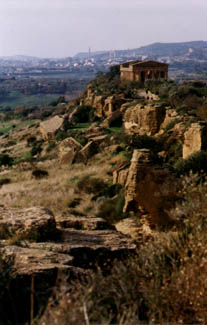
Temple of Concord (Courtesty Gary Luke, Dec 1998)
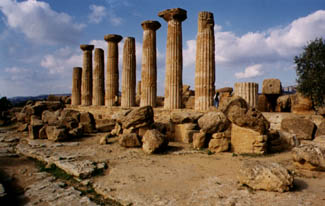
Temple of Hercules (Courtesty Gary Luke, Dec 1998)
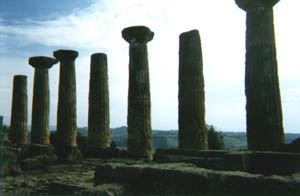
The eight columns of the Tempio di Ercole ( Hercules) (Dec 1998)
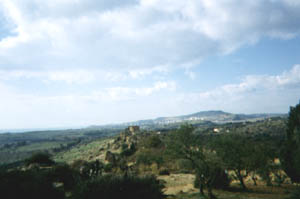
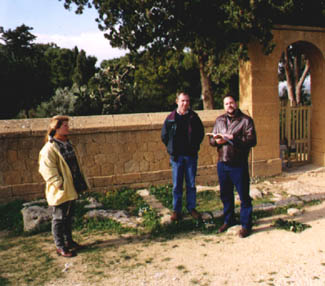
GIAK staffer Brett listens attentivly as Garbo quotes from the good book of antiquity, chapter 5, verse 6 - "and than they ate shoats, and orangatans, and large sloths, and small bits of rock, all washed down with their favorite box; and there was much rejoycing." (Courtesy Gary Luke, Dec 1998)

Temple of Concord (Courtesty Gary Luke, Dec 1998)
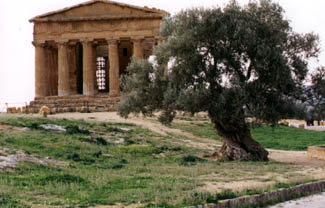
Temple of Concord (Courtesty Gary Luke, Dec 1998)

Temple of Hera/Juno (Courtesty Gary Luke, Dec 1998)

Tempio di Giunone (Dec 1998)
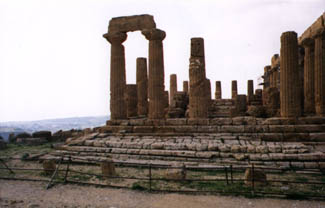
Temple of Hera/Juno (Courtesty Gary Luke, Dec 1998)